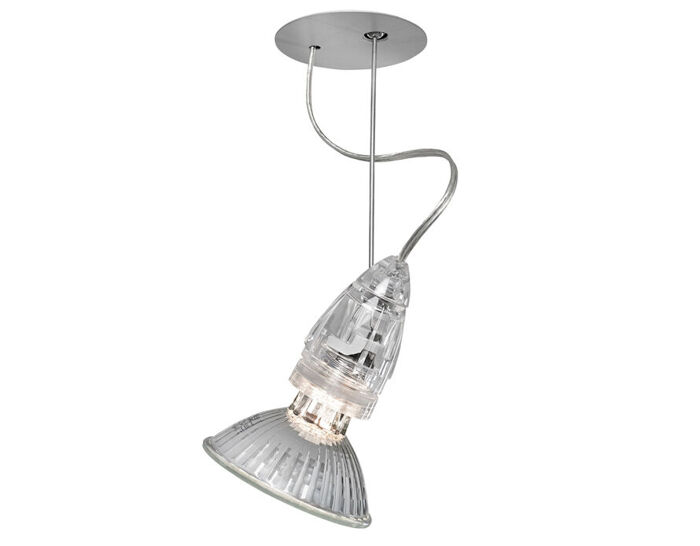Spock Ceilling/Wall Lamp
from ingo maurer
spock ceilling/wall lamp
Design Bernhard Dessecker, 1998
Stainless steel, glass, aluminum, adjustable ball-joint
Made in Germany by Ingo Maurer
Deceptively simple with its function in plain view. The bulb socket is fixed to a moveable rod on a ball-joint that allows for positioning. Box with cover for surface mounting. Flush mounting also possible, or can be fixed to wall.
Bernhard Dessecker has enjoyed more than thirty years of professional experience in lighting planning, interior architecture and developing and designing lighting fixtures. Dessecker's career began as an interior architect in 1983 at Studio Morsa in New York City.
The following year he became a member of the design team at Ingo Maurer. To those in the industry, he was known as the right hand of Ingo himself. Not only did Dessecker contribute his own designs to the collection, but he also developed many of the technically challenging and complex light fixtures. Additionally, he was responsible as project manager for myriad national and international projects. All the while, Dessecker managed his own project planning and design office, where he realized products and projects in Germany and elsewhere.
For Dessecker, the design journey is as important as the end result. His mission is to bring to life his client's vision in the most thoughtful and practical, yet beautiful, way possible. His many projects, from large scale metropolitan subway stations to private jobs to "one-off" hand-made products, all maintain an innovative, and sometimes quirky, elegance that is his signature style.
Ingo Maurer started to design exceptional lamps, lighting systems, and objects beginning in the middle of the 1960s, which his company produces and distributes worldwide. Manual production by hand is an integral part of their corporate philosophy and all Ingo Maurer designs have been hand-made in their production facility in Munich, Germany since 1970.
7.9" w | 9.8" h | bulb: requires 1x E26, max 75w (not included)
Stainless steel, glass, aluminum, adjustable ball-joint
Made in Germany by Ingo Maurer
Deceptively simple with its function in plain view. The bulb socket is fixed to a moveable rod on a ball-joint that allows for positioning. Box with cover for surface mounting. Flush mounting also possible, or can be fixed to wall.
Bernhard Dessecker has enjoyed more than thirty years of professional experience in lighting planning, interior architecture and developing and designing lighting fixtures. Dessecker's career began as an interior architect in 1983 at Studio Morsa in New York City.
The following year he became a member of the design team at Ingo Maurer. To those in the industry, he was known as the right hand of Ingo himself. Not only did Dessecker contribute his own designs to the collection, but he also developed many of the technically challenging and complex light fixtures. Additionally, he was responsible as project manager for myriad national and international projects. All the while, Dessecker managed his own project planning and design office, where he realized products and projects in Germany and elsewhere.
For Dessecker, the design journey is as important as the end result. His mission is to bring to life his client's vision in the most thoughtful and practical, yet beautiful, way possible. His many projects, from large scale metropolitan subway stations to private jobs to "one-off" hand-made products, all maintain an innovative, and sometimes quirky, elegance that is his signature style.
Ingo Maurer started to design exceptional lamps, lighting systems, and objects beginning in the middle of the 1960s, which his company produces and distributes worldwide. Manual production by hand is an integral part of their corporate philosophy and all Ingo Maurer designs have been hand-made in their production facility in Munich, Germany since 1970.
7.9" w | 9.8" h | bulb: requires 1x E26, max 75w (not included)
Ingo Maurer started to design exceptional lamps, lighting systems and objects beginning in the mid 1960s in Germany. Realizing design ideas without compromise is a core value.





 write a review now
write a review now